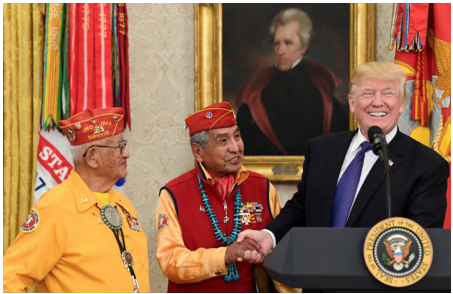CommentsRACISM CUTTING BOTH WAYS-Overall, perceptions of worsening racial relations have been building since the Obama years. And now, with everything from the Kate Steinle murder verdict to President Trump’s dog-whistling Muslim tweets, they seem destined to worsen further.
Ironically the strongest demand for racial exclusion comes mostly not from traditional racists — still not extinct — but from a campus left determined to address the evils of “whiteness” through policies of racial separation not seen since Jim Crow days. At some campuses, events are held that whites are excluded from and racially separate dorms are being developed. Even at the high school level, there are attempts to be “racially conscious” towards students, essentially teaching them to their racial “profile,” with dubious educational benefits.
President Trump’s unfortunate tendency to go out of his way to offend non-whites, whether they be Navajo war heroes, Hispanics or inner-city African Americans, makes this all worse. The president and the radical racialists both seem to find common purpose in the creation of kindling for racial bonfires.
Race in not the fundamental problem — class is
Some Democrats see identarian politics as the real core of the party and also the most likely course back to power, as the white population drops. The loser here, however, is any hope for racial comity. The rise of racialist politics — pushed by writers like Ta-Nehisi Coates — tends to deepen alienation between ethnic groups. For example, a steadily rising majority of Los Angeles residents now expect another riot in the next five years; that number climbs to 70 percent among younger people.
In California, and some other states, Latino politicians and activists have embraced the notion of “open borders” to the point that some cities, like San Francisco, actually advise aliens with criminal records how to avoid deportation. There is even a notion of downgrading citizenship itself, essentially erasing the border or any sense of shared national identity, more essential than ever in an increasingly diverse country. All this in a state, like California, where more whites are dying than being born since 2000.
Perhaps most tragically, this race-conscious approach does little to address the fundamental problem facing all young people — the lack of jobs that pay anything close to a sustainable family wage amidst soaring rents and home prices. The real issue is a growing class divide, that sees many Americans, including whites, being more downwardly mobile.
What’s the right policy agenda?
Neither party has a policy to relieve the chief causes of distress. Trump’s Goldman Sachs tax plan offers little succor for the middle and working class. Similarly, high-tax, high cost states like California and New York, where progressives rule the roost, notes progressive University of Texas scholar James Galbraith, suffer higher levels of inequality than their red state counterparts.
Indeed, many of the policies espoused by progressives in Sacramento, for example, make all but impossible the prospects for affordable, single family homes and have driven down homeownership for minorities down in California. In contrast, less regulated states, notably Texas, see higher rates of social mobility and minority home ownership.
Similarly, California policies that raise energy prices represent a direct assault on working class and minorities. This is particularly true in the case of manufacturing and construction, historically large employers of upwardly mobile minorities. Kevin de León, now running for the U.S. Senate, may impress the well-heeled green lobby, but his actions help dry up opportunities for his largely impoverished constituents. Overall, even left-wing academics like USC’s Manuel Pastor, while praising the state’s progressive mentality in terms of “engagement,” particularly in politics, admits that this has not succeeded in “closing gaps” in such critical areas as education, income and opportunity.
Transcending the racial trap
Race politics have long been a refuge for scoundrels and demagogues, and continues to do so. Trump’s insensitive tweets hurt, but so will such things as sanctuary cities, and ever-greater pressure against the police. After all, who suffers if over 10,000 habitual felons are not being deported? Do already hard-pressed communities — California is home to roughly 2.5 million undocumented, one quarter the national total — really need more people like Steinle shooter Jose Ines Garcia Zarate?
Mexican political activists and virtue-signaling liberals may celebrate sanctuary cities, but their negative impacts are not felt in Beverly Hills, Newport Beach or Claremont but by residents of south Los Angeles, Santa Ana or San Bernardino. Similarly adding large numbers of often poorly educated people seems not be the best way to boost an already failing education system, stem rising crime rates or help already low-end workers improve their bargaining position. Almost half of all foreign born people in the state, twice the percentage of native born, notes the United Way, barely make enough to make ends meet.
The real — and only effective — way to address racial barriers lies in building a strong, broadly based economic growth. This has worked to the benefit of minorities in many parts of the country, and could reap rewards here in California as well. If only we got off the race kick, and started working on the real challenges facing all middle and working class Americans, we can move towards a politics that does not divide us but rather makes us all stronger.
(Joel Kotkin is the R.C. Hobbs Presidential Fellow in Urban Futures at Chapman University in Orange and executive director of the Houston-based Center for Opportunity Urbanism (www.opportunityurbanism.org). He also appears in the Orange County Register where this article was published.) Photo: Susan Walsh, AP. Prepped for CityWatch by Linda Abrams.
-cw














